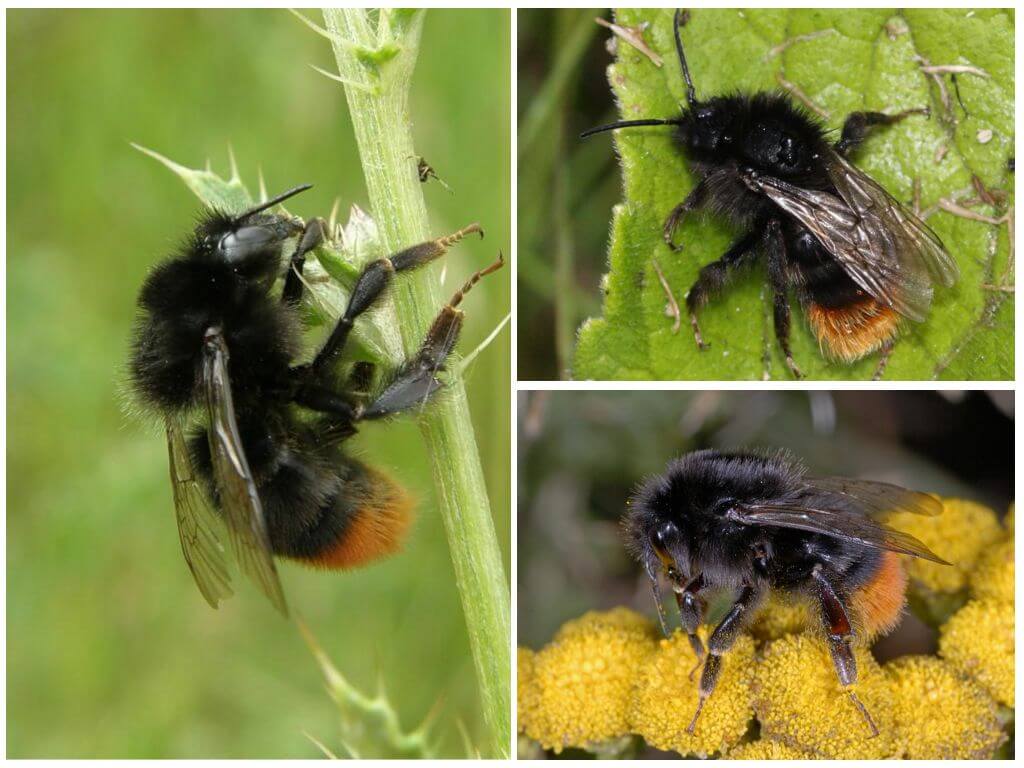Description and photo of a stone bumblebee
The stone bumblebee was first described by the scholar Carl Linnaeus in 1880. He named this species Apis lapidaria Linnaeus, which was later renamed Bombus lapidarius (Linnaeus). A distinctive feature of this species is the black color of the whole body, with the exception of the tip of the abdomen, which is colored bright orange or scarlet.
Appearance
The size of the stone bumblebee is almost the same as the size of its closest counterparts. Females responsible for breeding in the nest, have the largest body size - about 23 mm in length. Female workers and male drones do not exceed 16 mm in length.
On a note!
A distinctive feature of males is their lack of sting. For humans, they pose no danger.
Bright black color is peculiar to all representatives of Bombus lapidarius. But males have a yellow collar on their chests. Also male drones have longer tendrils from 13 segments. In the female, the antennae consist of 12 parts. Red hairs at the end of the abdomen attach bumblebee elegant image.
Habitats
The name bumblebee "stone" was given for a reason. This species of bee relatives prefers to build nests under a pile of stones. Representatives of stone bumblebees are considered a small species. Their habitat is:
- European part of the continent in mid-latitudes;
- south of Western Siberia;
- Baikal region;
- north of Kazakhstan.
The stone bumblebee is active in collecting nectar from April to September in fields, meadows, and coppices. May be found in gardens and orchards. Almost all plants that come to the attention of an insect are subject to pollination. One family recites 300-400 individuals.
Nest device
The founding mother in the spring lays a batch of eggs in a secluded place she chooses among the stones.She takes care of her first offspring herself. After a few weeks, the younger generation is already helping her. When the number of stone bumblebees exceeds the first hundred, the female ceases to fly out of the nest and is engaged only in laying eggs.
Working females collect nectar and bee bread to replenish the hive stocks. They have a long proboscis, which is adapted to collect the sweet liquid inflorescences. Drones build new cells for breeding offspring and for storing recycled nectar, known as honey. Males do not collect flower sweets and do not participate in pollination of plants.
Bumblebee Honey not inferior in taste and healing qualities of the bee. But it is inferior in quantity, since the lifespan of shaggy insects is only a few months and there is no need to make large stocks of food.






